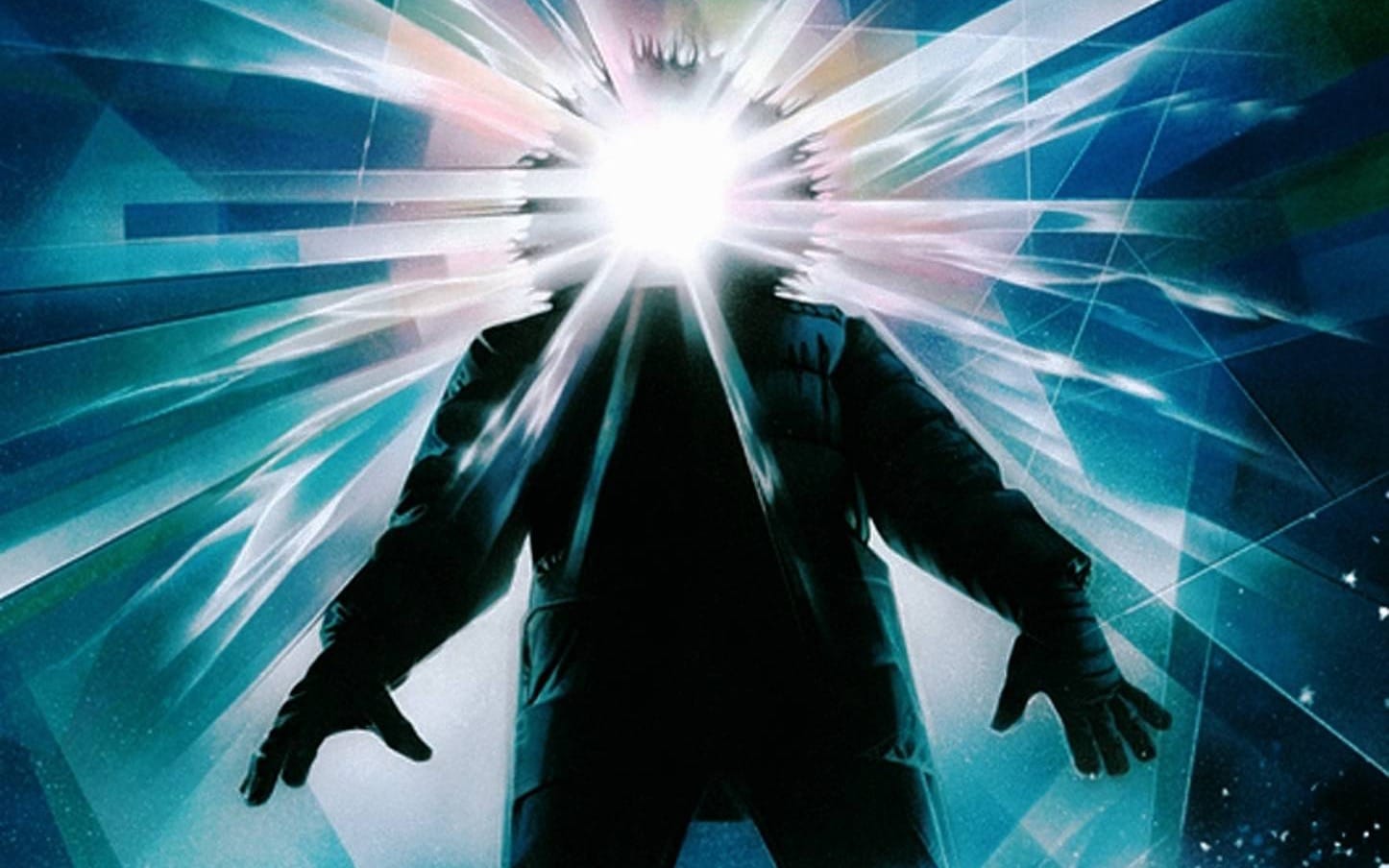If you followed the horror movie genre in the late 1970s and early 1980s, the name “John Carpenter” was inescapable. Renowned for crafting suspenseful atmospheres and composing spine-tingling scores in his films, Carpenter was Hollywood’s newest hit-maker. He quickly racked up a string of wins that included famous titles such as “Halloween” in 1978, “The Fog” in 1980, and “Escape from New York” in 1981.
Universal Pictures coveted the kinds of rich returns Carpenter’s films were earning. They saw a promising young director who knew how to make a modern scary movie, finish it on time and on budget, and make piles and piles of cash with the end product.
So, hot on the heels of his impressive run of financially lucrative hits, Universal approached Carpenter for his first major studio gig: remaking Howard Hawks’ 1951 classic, ‘The Thing from Another World.’
‘The Thing from Another World’ was one of Carpenter’s favorite movies as a child, and he was reluctant to attempt a remake. He came around as he explored the original 1938 novella that inspired Hawks and realized he could still pay tribute to the man, if indirectly.
The Western film genre, and especially Howard Hawks’ Westerns, had been a formative influence on the future director. And, while he never made an actual Western himself (with ‘Vampires’ being a debatable entry in his catalog), Carpenter never forgot his roots.
Was Carpenter’s 1982 remake a Western hiding inside a horror movie? From the chillingly memorable score to the bleak setting and rough-and-tumble characters, the evidence is on display all throughout his now classic iteration of ‘The Thing.’
The Wild Frontier of Old Hollywood
There have always been never-ending franchises, spinoffs, remakes, reboots, and ripoffs in cinema. Just look at how many name-brand ‘Dracula’ movies there have been… Not even counting non-Dracula vampire movies in general! There have been multiple dozens of ‘Dracula’ films, spanning the 1920s to the present day… And let’s not forget that it all started as an adaptation of Bram Stoker’s book, first published in 1897.
Nonetheless, film critics in 1982 were dismayed when news of Carpenter’s remake started making the pre-release rounds. After all, the story of ‘The Thing from Another World’ was already told… What more was there to tell? And remaking a beloved classic? Many were skeptical.
But remakes, reboots, and reimaginings have been a part of Hollywood from the very beginning.
The early days of filmmaking were like the Wild West themselves… There was little in the way of copyright law for films until 1912. Early filmmakers would shamelessly rip off other filmmakers simply because it was easier to turn a buck using someone else's inspiration. With the addition of synchronized sound in 1927, remakes became big business for movie studios. Silent films were remade as “talkies,” and, later on, black-and-white films were remade in color.
These actions were emblematic of the studios’ acknowledgment that times change. Some stories, characters, settings, and music that work in one time and place may not have the same punch for audiences decades later as they first did.
Movie studios realized this early on and never forgot it.
Knowing that a faithful remake of ‘The Thing from Another World’ was not likely to press the same buttons for audiences in 1982 as it did 30 years prior, Carpenter took the chance to make his first big-budget production a very different movie from Hawks’.
From Greenhorn to Sheriff
Carpenter’s sense of theatrics and film scores was developed at an early age. His father was a college music professor, so naturally, young John grew up immersed in classical music. He didn’t believe he had any talent and resented being forced to learn musical instruments and practice as his father demanded.
An ambitious lover of cinema long before he got his professional start, Carpenter was making 8mm horror flicks before he’d even started high school.
After two years at Western Kentucky University studying History and English, in 1968 he transferred to the University of Southern California’s School of Cinematic Arts to pursue a living making movies.
Fortune smiled on the young director when he landed a gig co-writing and directing the low-budget independent horror film ‘Halloween.’ It was a surprise mega-hit when it was released in 1978, raking in $70 million against a miniscule budget of just $300,000. With no extra money to hire a composer, Carpenter created an iconic, tense synthesized theme that continues to get accolades to this day. His musical upbringing started paying off in a big way.
As with ‘Halloween,’ Carpenter also scored his two subsequent big-screen releases, ‘The Fog’ and ‘Escape from New York,’ with the latter seeing an early collaboration with film composer Alan Howarth.
While it may have been borne out of budgetary necessity, Carpenter loved composing for his films. With a major studio like Universal, though, there was no excuse to cheap out. He had to accept that he was going to have to work with another composer if he wanted to make ‘The Thing.’
And, like much of his movie, his choice would be influenced by the Western film genre.
Go West, Young Thing
Two of Carpenter’s previous films helped flesh out his style and set the stage early on for his Western-style proclivities: 1976’s ‘Assault on Precinct 13’ and 1981’s ‘Escape from New York.’ Both showed off Carpenter’s interest in a swaggering anti-hero who does the right thing but for self-interested reasons. And, as with ‘Halloween,’ Carpenter also scored them both.
In 1982’s ‘The Thing,’ the anti-hero is R.J. MacReady, with Kurt Russell playing the role to the hilt. Roughly hewn, bearded, brandishing a cowboy hat, swilling whiskey, and armed with a shotgun (and eventually a six-shooter and even dynamite), he’s the quintessential loner with a mysterious past…just like the lead character of so many Westerns.
Mirroring the post-Civil War era setting of many Westerns, MacReady is a Vietnam vet who found work as a helicopter pilot about as far away from other humans as he could possibly get: a tiny, remote research base in Antarctica called Outpost 31.
An inhospitable land that will promptly kill you if you’re out in the elements for too long, Antarctica also happens to be the world’s largest desert… An environment of harsh extremes, just like its Old West counterpart.
The isolated nature of Outpost 31 evokes the desolate vibes of an Old West shanty town, enhanced by the fact the group isn’t even a dozen strong and their access to modern amenities, even by 1982 standards, is minimal.
And, much like the ”Spaghetti Westerns” Carpenter grew up with, his film had an all-male cast.
We meet them as a gun-toting stranger arrives from afar, yelling in a foreign language and erratically firing a rifle. He’s killed in a shootout before the inhabitants of Outpost 31 can make sense of what he was screaming.
Only later do they realize that a creature has infiltrated the base and has killed, absorbed, and perfectly imitated at least one member of the team. Its splattery, shape-shifting malice hides behind a friendly face.
Once they start facing the reality of a monster in their midst, their vehicles are out of commission in short order, as is their radio. Nobody is coming to help them. They might as well be stuck in an Arizonan desert in 1870.
The men barricade themselves against each other, not knowing who they can trust... A noose is visible in one scene, and a “lynching party” is mentioned in another. They form alliances and engage in betrayals. Their number is whittled down by both the Thing and the paranoia of their fellow men until Carpenter drags us to his famously nihilistic and morally ambiguous ending.
Providing the relentless pulse that drives the action and punctuates the screams is a score written by Ennio Morricone, the celebrated composer of the Spaghetti Westerns Carpenter was such a fan of in his youth.
Hogtied by Preconceptions
Born in Rome, Italy in 1928, Ennio Morricone was a prolific composer and considered by many to be among the greatest film composers in history. He scored no less than 70 award-winning films in his extensive career. Between 1964 and 1971, he composed scores for all of Sergio Leone’s Spaghetti Westerns, starting with ‘A Fistful of Dollars.’
When it came time to choose a composer, Carpenter thought of nobody else.
He flew to Rome to meet with Morricone and bring him onto the project. Morricone didn’t speak English and Carpenter didn’t speak Italian, making the collaboration a challenge. Still, Carpenter was determined that Morricone was the only man for the job and persuaded him to take the gig.
Morricone took Carpenter’s notes as best he could and got to work… To disappointing results. Stuffed with busy passages and theatrical flourishes, it was the exact opposite of Carpenter’s minimalistic style. Morricone’s initial effort was ornate and beautiful… Carpenter’s film was not. He was in the unenviable position of telling his idol that it needed work.
Wanting the score to feel similar to his previous films, he played some of the music from ‘Escape from New York’ for Morricone and asked him if he could do something like that… Simpler. Less melodic. Electronic.
Morricone delved into some of his own earlier works and came back with an unused electronic score. The theme to ‘The Thing’ was born.
Carpenter was thrilled… Morricone was confused.
“I've asked [John Carpenter], as he was preparing some electronic music with an assistant to edit on the film, 'Why did you call me, if you want to do it on your own?' He surprised me, he said, ‘I got married to your music. This is why I've called you.’” – Ennio Morricone
Having Morricone score his film was a dream come true for Carpenter… But what Carpenter ultimately wanted was an Ennio Morricone score that sounded like a John Carpenter score.
What Carpenter didn’t realize at first was how much Morricone had added to the film.
“Oh, I love that music … So stark … I struggled with the darkness of [‘The Thing’] for a bit, and Morricone had it figured out ahead of time in one of his pieces. He helped me realize what it was about: It’s about the end of the world. It’s about the end of everything. You can’t fight this. If it happened, you couldn’t fight it … And I realized: That’s what this movie is.” – John Carpenter
Morricone scored 20 minutes of music, both electronic and orchestral, for Carpenter to use (or not use) as he saw fit.
After the Dust Settled
When ‘The Thing’ debuted on June 25th, 1982, it was a box office dud and instantly reviled critically… But time has been kinder and it’s now widely considered one of the best horror movies ever made, and John Carpenter’s crowning achievement.
The movie, though, like its score, isn’t perfect.
When you listen to the score, you either get electronica or you get an orchestra, depending on the track. The disparity does make it a little difficult to enjoy as strictly a listening experience. When watching the film, the dissimilarity is less noticeable...You’re instead completely transfixed by what’s happening on the screen.
As far as being a covert Western, if you’re not convinced yet, you should check in with Quentin Tarantino. His acclaimed Western, ‘The Hateful Eight,’ is a love letter to ‘The Thing’... Right down to casting Kurt Russell as the lead and the score being composed by Ennio Morricone (including unused tracks from ‘The Thing’), who won his only Academy Award for the film.
As for Carpenter, his directorial career never really bounced back from how his first big-budget project was received… But he’s reinvented himself with a whole new career performing his film scores for live audiences.







Comments